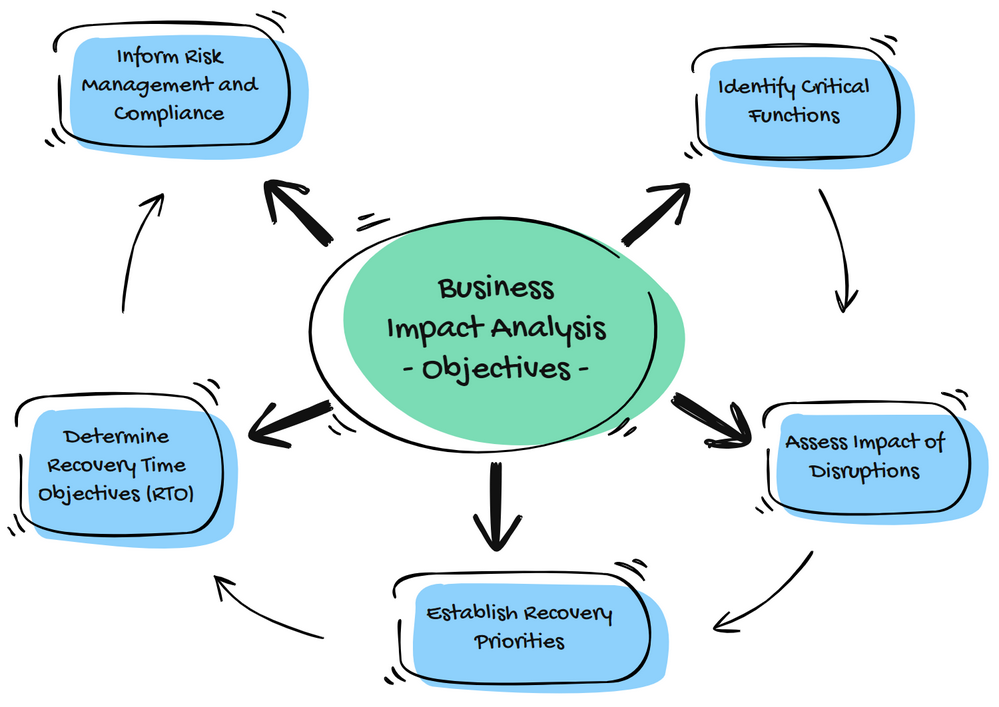A Business Impact Analysis (BIA) is a systematic process that organizations undertake as part of their Business Continuity Planning (BCP) and Business Continuity Management (BCM) efforts. It is a crucial phase that lays the foundation for developing robust and effective strategies to mitigate the impacts of potential disruptions on critical business operations.
Clarity on the objectives of a BIA is essential for ensuring a comprehensive and focused analysis. Organizations can gather valuable insights and make informed decisions to safeguard their operations and maintain business continuity by aligning the process with well-defined objectives.
Here are some key objectives that should guide the BIA process:

- Identify Critical Functions: The primary objective of a BIA is to identify the critical functions and processes that are vital to the organization’s survival and continued operation. The organization can prioritize recovery efforts during disruptions by pinpointing these essential functions and ensuring that resources are allocated effectively.
- Assess Impact of Disruptions: A BIA aims to quantify potential disruptions’ operational and financial impacts on the identified critical functions. This assessment helps organizations understand the risks associated with business continuity and the possible consequences of inadequate recovery strategies.
- Establish Recovery Priorities: The BIA enables organizations to prioritize recovery efforts based on criticality and impact assessments. Organizations can allocate resources efficiently during a crisis by understanding which functions require immediate attention and which can be addressed later, minimizing downtime and potential losses.
- Determine Recovery Time Objectives (RTO): The BIA process helps define acceptable downtime or Recovery Time Objectives (RTO) for each critical function. These RTOs guide the development of recovery plans and inform the investments required to achieve the desired level of resilience.
- Inform Risk Management and Compliance: The insights gained from the BIA feed into the broader risk management process and compliance requirements. By providing detailed information on potential vulnerabilities and regulatory obligations, the BIA supports organizations in developing comprehensive risk mitigation strategies and ensuring compliance with relevant industry standards and regulations.
A well-executed BIA ensures that organizations can respond promptly and effectively to disruptions, maintaining operational integrity and stakeholder confidence by clearly defining and aligning with these objectives. It serves as a critical foundation for building resilience and minimizing the impact of unforeseen events on business continuity.

